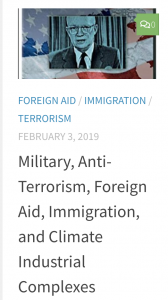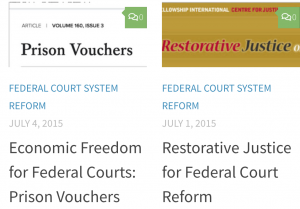Stoa Policy: Military Commitments, Labor Reform, Penal Reform
Stoa league has Policy and LD topic choice with analysis: Spring Vote 2020.
1. Preliminary notes and links, first on foreign policy:
Can this new think tank clean up America’s flabby foreign policy? (The Week, July 3, 2019) on tackling The Blob:
“The Blob,” of course, is an epithet that critics apply to the gaseous, ideologically stultifying consensus in favor of foreign policy hawkishness that prevails in the leadership of both parties, on Capitol Hill, in the Pentagon and intelligence agencies, at defense contractors, and especially among staffers at most Washington think tanks.
• The Quincy Institute for Responsible Statecraft
The foreign policy of the United States has become detached from any defensible conception of U.S. interests and from a decent respect for the rights and dignity of humankind. Political leaders have increasingly deployed the military in a costly, counterproductive, and indiscriminate manner, normalizing war and treating armed dominance as an end in itself.
Economic Thinking posts on foreign policy here. Including Military, Anti-Terrorism, Foreign Aid, Immigration, and Climate Industrial Complexes.
2. Economics of labor policy reform. The U.S. Department of Labor is a legacy of the Progressive Era. From the USDL “6. Progressive Ideas” page:
Progressives were convinced that job safety and health was too important to remain solely a responsibility of employers. Secretary of Commerce and Labor Charles Nagel stressed at a conference on industrial safety in 1911 that “the great enemy of this country is waste” and that “it takes the government to establish the rules of the game” to assure fair play for workers and others who could not protect themselves. The Progressive Party platform of 1912 declared that “The supreme duty of the nation is conservation of human resources” and it called for strong safety and health legislation.130 One of the two new public programs that developed in the Progressive period was “administrative rule‑making,” whereby labor departments or industrial commissions could independently issue safety and health regulations without having to go back to the legislature.
Reforming or closing the Department of Labor is one of many downsizing proposals featured in “How to Eliminate Almost Every Federal Agency,” The Atlantic, August 13, 2014:
Labor Department: The Cato Institute has offered up spending cuts for Labor, largely through reforming unemployment insurance. Others, including Fox Business host David Asman and Virginia Libertarian Party House candidate Will Hammer, have said the department should be axed entirely, with insurance and training being left up to the states.
Heritage Foundation in 1995 published “How to Close Down the Department of Labor.”
The U.S. Department of Labor offers an array of jobs training programs, listed here. And the 2019 DOL budget explains:
The Employment and Training Administration (ETA) administers federal workforce development and worker dislocation programs, federal grants to states for public employment service programs, and Unemployment Insurance benefits. These services are primarily provided through State and local workforce development systems with support from Federal and other funding sources.
James Bovard’s research on federal jobs training is worth considering: What Job ‘Training’ Teaches? Bad Work Habits (WSJ, September 13, 2011):
Last Thursday, President Obama proposed new federal jobs and job-training programs for youth and the long-term unemployed. The federal government has experimented with these programs for almost a half century. The record is one of failure and scandal.
Many Economic Thinking posts on Federal labor law here. Including Notes on Reforming Federal Labor Law (May 7, 2017).
3. Penal Reform Many past Economic Thinking posts on prison reform here. Including Let Low-Income People in Prisons and Schools Work, Economic Freedom for Federal Courts: Prison Vouchers, and Restorative Justice for Federal Court Reform. 
